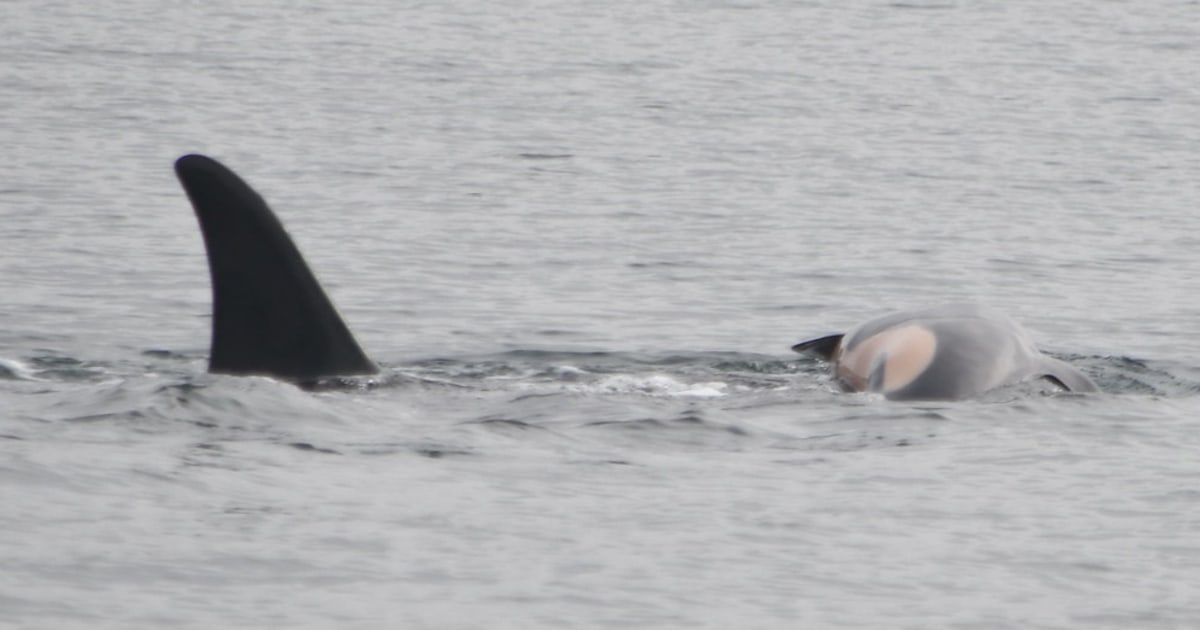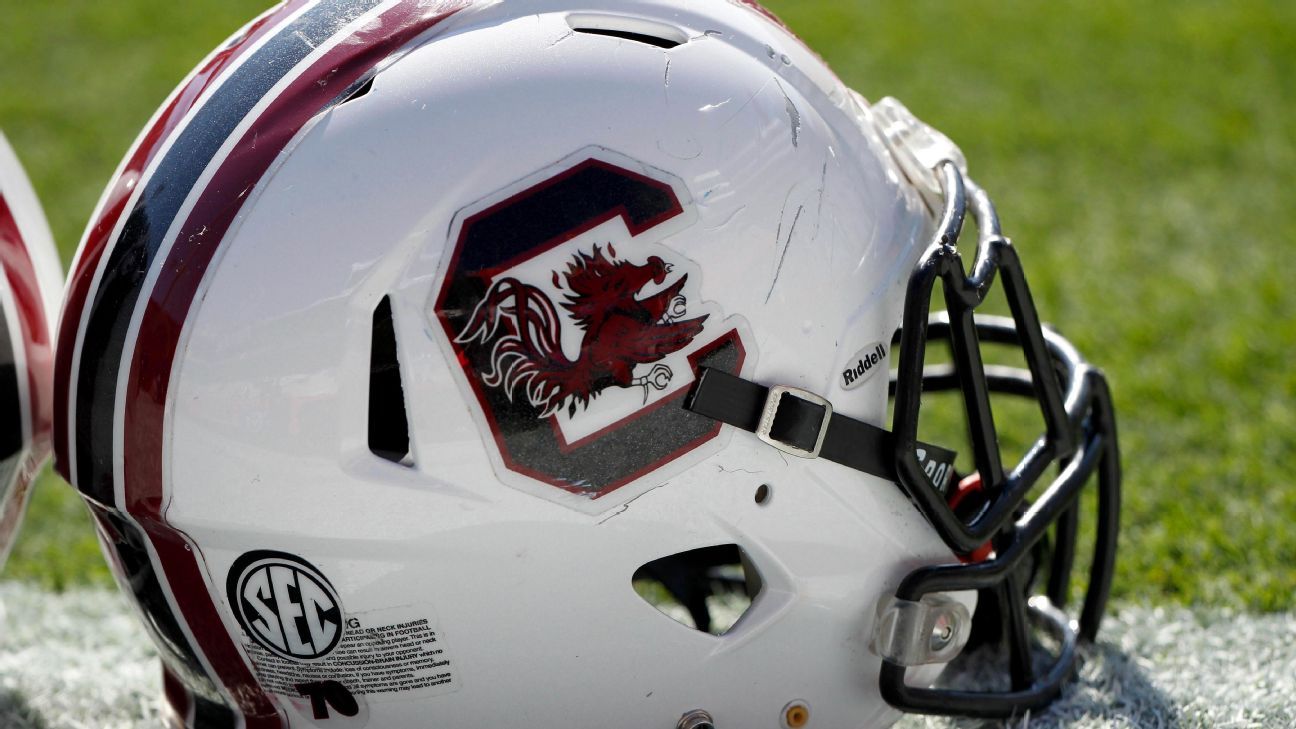Now Reading: Orca who carried dead newborn has lost another calf and is carrying it again
-
01
Orca who carried dead newborn has lost another calf and is carrying it again
Orca who carried dead newborn has lost another calf and is carrying it again

The Summary
- An orca that carried her dead calf with her for days in 2018 appears to be repeating the behavior with a newly deceased baby whale.
- Scientists think the killer whale is likely to be expressing grief.
- The orca is part of a critically endangered subpopulation known as southern resident killer whales.
Nearly six years ago, an orca mother drew international attention when she carried her dead calf for 17 consecutive days. Now, sadly, the whale seems to be repeating what researchers say is a show of grief with another newborn that has died.
The mother whale, known as J35 and also as Tahlequah, was first spotted with a new calf on Dec. 20. But on Wednesday, researchers from the National Oceanic and Atmospheric Administration photographed her off West Seattle with the baby whale’s carcass on her head.
“We were able to confirm J31 had lost the calf and she was pushing it around on her head,” Brad Hanson, a research scientist with the NOAA Fisheries Northwest Fisheries Science Center, said at a news conference Thursday.
He added that when the calf appears to sink, “it looks like she’ll do a high arch dive to go down and recover the calf, and whether or not she’s pushing it at that point or grabbing it, we’re not real sure.”
Scientists said they think Tahlequah is most likely carrying the deceased calf as an expression of grief. Joe Gaydos, the science director of the SeaDoc Society, a marine research organization, said at the news conference that whales have hardwiring similar to that of humans and other large, social mammals that live for a long time.
“We have the same neurotransmitters that they have. We have the same hormones that they have. Why shouldn’t we also have the same emotions that they have? We don’t have the market cornered on emotions. And so I think it’s fair to say that she is grieving or mourning,” Gaydos said, adding that similar behavior has been observed in dolphins and nonhuman primates.

J35 is part of a critically endangered subpopulation of whales known as southern resident killer whales. With the death of Tahlequah’s calf and the recent birth of a different orca, the group’s number is at just 73.
Over the years, Tahlequah has had two calves that survived, both males, one of them born in 2020.
The southern residents are given tracking numbers by the Center for Whale Research and are closely observed by researchers, photographers and whale watchers — particularly when they’re near communities along Puget Sound, like Seattle.
Scientists have been following the deceased calf’s story for several weeks. Hanson said that after citizen scientists first noticed the female calf, called J61, NOAA researchers spotted her themselves on Dec. 23. They were concerned about the calf’s health at that time, he said, because it appeared to be struggling and surfacing abnormally.
It’s not uncommon for killer whale calves to die shortly after birth. Michael Weiss, the research director at the Center for Whale Research, said the first year of life is the biggest hurdle for survival.
About 70% to 80% of calves that researchers are able to document and give identifying numbers survive their first years.
“We don’t know exactly what the survival rate is, because so many calves are probably being born and dying before they’re ever photographed and documented,” Weiss said. “It’s likely closer to, you know, 50% of calves are born that make it through that first year.”
NOAA researchers said they are now concerned about Tahlequah’s own health, because pushing the calf creates a lot of drag in the water and requires a lot of energy.
“One of the things that she’s probably not having time to do is forage,” Hanson said. “It is a concern that she’s expending a lot of energy to try to take care of this calf that she has lost.”
This is the typical calving season for southern resident whales. Hanson said the researchers were encouraged by the birth of the other orca, called J62, which was first spotted by observers on Dec. 30 and confirmed by the Center for Whale Research on New Year’s Day.
“It would appear to be very robust,” Hanson said.
Southern resident killer whales have been a target of conservation efforts for decades. They are protected under the Marine Mammal Protection Act and were listed as critically endangered in 2005.
The whales typically spend several months each year along Washington’s coastline in Puget Sound. They live in three pods — called J, K and L — and have evolved to eat mostly fish, including prized Chinook salmon.
Beginning in the 1960s, many southern resident killer whales were killed or captured, with some survivors put on display at marine parks. By 1974, surveys found just 71 left in the wild. The population fluctuated after that — it reached a high of 95 in 1995 but has since been declining.
The whales are struggling primarily because the quality and quantity of their prey have diminished and because of pollution from industrial chemicals like polychlorinated biphenyls (PCBs), which contaminate their prey and accumulate in their bodies. In addition, noisy vessels can disrupt the whales and hamper communication.
Research suggests the southern residents are on a path toward extinction unless more aggressive action is taken. Already, Washington state and federal agencies have invested more than $1 billion in programs to reduce the threats to the whales. But the bottom line remains: The southern residents simply don’t have enough food.
Key streams that once produced ample salmon — including the lower Snake River — are dammed, which restricts access to and survival of the fish.
“We are not doing enough on Chinook recovery and salmon recovery,” Gaydos said.
For the struggling southern residents, the loss of a female calf is a devastating blow not only to her mother but also to the trajectory of the entire subspecies.
“The real limitation is the number of reproductive-age females and how capable they are of actually successfully rearing the calf. So we definitely want to see more females in the population,” Weiss said.



















